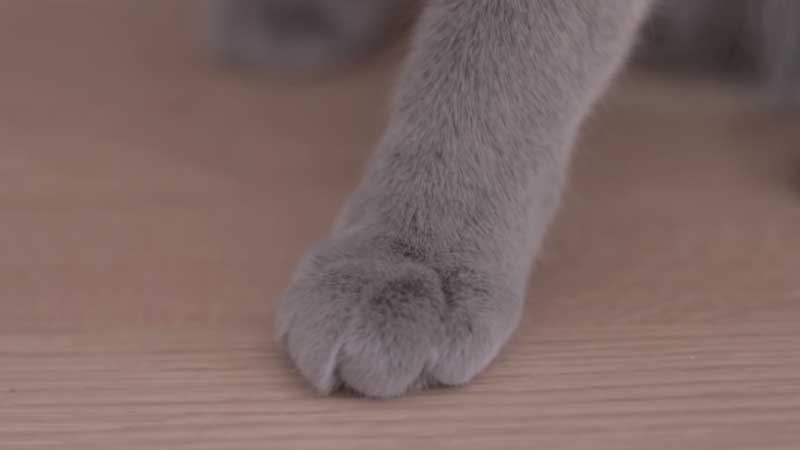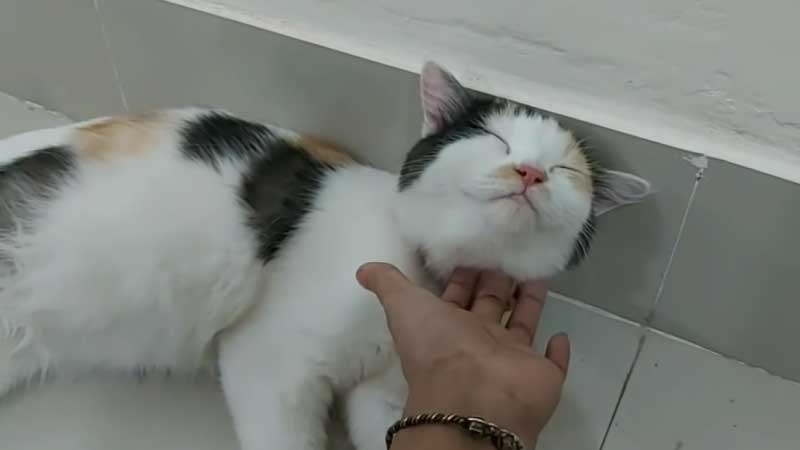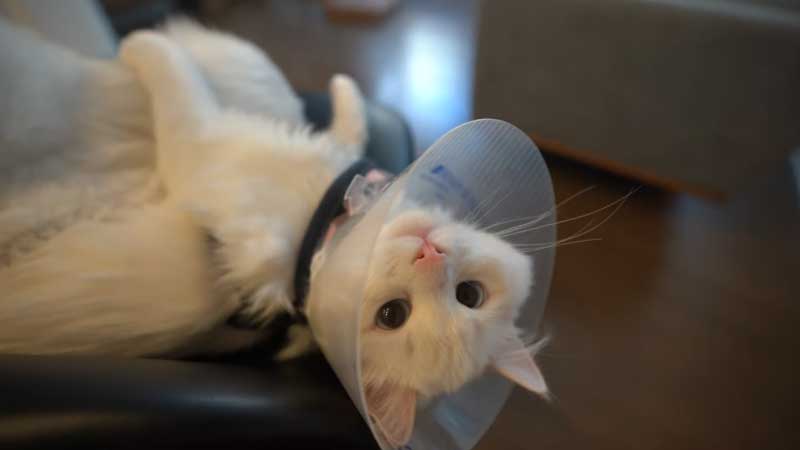Onychomycosis, also known as cat claw fungus, is a fungus that afflicts cats’ claws. It happens when different fungi, like yeast or dermatophytes, infiltrate the claws and produce various symptoms.
Numerous things, such as poor hygiene, exposure to contaminated environments, a compromised immune system, or close contact with other infected animals, can lead to cat claw fungus.
Infected cats may also feel discomfort, pain, or swelling around the affected claws. That’s why, after seeing these symptoms, you need to pay close attention and start the right treatment so that you can provide the right treatment for your cat. In this complete guide, we will discuss home remedy for cat claw fungus, so without wasting time, let’s get started.
- Symptoms and Reasons for a Fungal Infection Cat Claw Fungus
- Home Remedy for Cat Claw Fungus (Solutions)
- Frequently Asked Questions (FAQs)
- How long does it take for home remedies to work on cat claw fungus?
- Can I use over-the-counter antifungal creams on my cat’s claws?
- Are there any potential side effects of natural remedies for cat claw fungus?
- Should I consult a veterinarian before trying home remedies?
- Can cat claw fungus be completely cured with home remedies alone?
- What steps can I take to prevent the recurrence of cat claw fungus?
- Conclusion
Symptoms and Reasons for a Fungal Infection Cat Claw Fungus
First, we need to know the main reasons for cat claw fungus and how it affects our feline friends.
Symptoms of cat claw fungus
There is a possibility that the following symptoms indicate the presence of cat claw fungus:
- Claws that have changed color, either becoming darker or more yellow.
- Claws that are either thickened or brittle
- Deformity or an irregular shape of the claw
- Symptoms such as redness or swelling near the claw bed
- When touched or moved, cats may experience discomfort or pain.
How to treat cat claw fungus
It is essential to seek the advice of a veterinarian if you have any indication that your cat may be suffering from serious claw fungus. To determine whether or not cat claw fungus is visible, the veterinarian will conduct a physical exam, analyze the symptoms, and may suggest further testing, such as a fungal culture or microscopic observation.
The importance of early awareness
It is essential to make an early diagnosis of cat claw fungus to prevent the development of further adverse effects. You can ensure your cat receives proper treatment for this condition by recognizing the symptoms and seeking veterinary assistance.
Home Remedy for Cat Claw Fungus (Solutions)

Step 1: Maintaining proper hygiene
When you want to prevent cat claw fungus, proper hygiene plays a crucial role. Here are some essential hygiene practices that you can follow:
- Your cat’s living environment, including its bedding and scratching posts, should be cleaned on a regular basis to reduce the risk of fungal contamination.
- It is essential to thoroughly wash your hands before and after interacting with your cat’s claws, which can reduce the risk of spreading infection.
- Regularly trim your cat’s nails to prevent fungal growth and maintain claw health.
Step 2: Natural Antifungal Treatments for Cat Nail Fungus

Several natural cat claw fungus treatments can help eliminate cat claw fungus and encourage healing. It is essential to emphasize that the use of these remedies must be checked by a veterinarian and carried out along with any treatments that have been prescribed.
- Apple cider vinegar soak: Soak your cat’s affected claws in a solution of diluted apple cider vinegar and water for a few minutes. This natural treatment helps to produce an environment that is unfavorable for the growth of fungus.
- Tea tree oil application: Tea tree oil possesses antifungal properties. Combine a small amount of tea tree oil with carrier oil, such as coconut oil, and apply it to the affected claws using a cotton ball. Tea tree oil should be used with caution; cats may become ill if it is consumed or applied in excess.
- Aloe vera gel for soothing relief: Aloe vera gel has soothing and healing properties. Apply a small amount of pure aloe vera gel to the claws to relieve pain and promote healing.
Step 3: Nutritional Supplements for Cat Claw Fungus Treatment

Your cat’s claw health and immune system can both benefit from the consumption of particular nutritional supplements, so it is important to add them to their regular diet. Here are some beneficial supplements:
- Omega-3 fatty acids for strong claws: Fish oil is a common source of omega-3 fatty acids, which are known to improve claw strength and overall nail health. Omega-3 fatty acids are also sometimes found in nuts and seeds.
- Biotin supplementation for improved nail structure: The B vitamin known as biotin is extremely important for maintaining healthy and strong nails. I would recommend you consult with your cat’s veterinarian and ask them which biotin supplements you can add to your cat’s diet.
- Vitamin E for overall nail health: Vitamin E, which has anti-oxidant characteristics, can help your cat’s nails maintain a healthy state, and it’s easy to get it at most health food stores. Talk to your cat’s veterinarian about appropriate vitamin E supplements for your cat.
Frequently Asked Questions (FAQs)
How long does it take for home remedies to work on cat claw fungus?
It is possible for home treatments for cat claw fungus to be effective, but this will depend on the level to which the infection has progressed and how each cat responds to treatment. Even with consistent use of home remedies, it may take a few weeks before you feel significantly better.
Can I use over-the-counter antifungal creams on my cat’s claws?
No, you shouldn’t put antifungal creams on your cat’s claws that are made for humans. When it comes to medicines and other substances, cats can have unusual sensitivities and reactions.
Are there any potential side effects of natural remedies for cat claw fungus?
Though there is little to no risk of adverse effects from using natural remedies for cat claw fungus, it is important to proceed with caution. Some felines are sensitive to or allergic to naturally occurring substances, which can cause skin irritation or reactions. If your cat experiences any side effects from a treatment, it is essential that you stop giving it immediately and consult with a veterinarian.
Should I consult a veterinarian before trying home remedies?
The short answer is Yes. Cat owners should seek the advice of a vet before trying out any DIY treatments for nail fungus. A veterinarian is the most effective option to diagnose the problem, determine how serious it is, and suggest a course of treatment. Along with conventional medical care, they can also advise you on the use of alternative options.
Can cat claw fungus be completely cured with home remedies alone?
There are a number of variables that could affect whether or not a cat’s claw fungus is completely cured. The best way to ensure your pet gets the care they need is to consult with a veterinarian, but there are some symptoms that can be treated at home. If veterinarian feels it’s necessary, they may recommend additional treatments or procedures to give your cat the best chance of recovery.
What steps can I take to prevent the recurrence of cat claw fungus?
To minimize the risk of cat claw fungus recurrence, follow these preventive measures:
- Always practice good hygiene, which includes keeping the space in which your cat lives clean and sanitized on a regular basis.
- Keep your cat’s claws trimmed regularly to prevent dirt and debris from building up.
- It is best to have separate litter boxes for each of your cats and to clean them on a regular basis.
- Keep an eye on your cat’s overall health and immediately address any underlying conditions or signs of a weakened immune system.
Conclusion
Claw fungus in cats is a common problem that can be frustrating for both cats and their owners, but it can be treated. In this guide, we have discussed how home remedy for cat claw fungus, along with proper hygiene practices and veterinarian guidance, can help reduce the discomfort related to cat claw fungus and facilitate the healing process.
Don’t forget to take your cat to the vet to get a proper diagnosis and complete a treatment plan.




